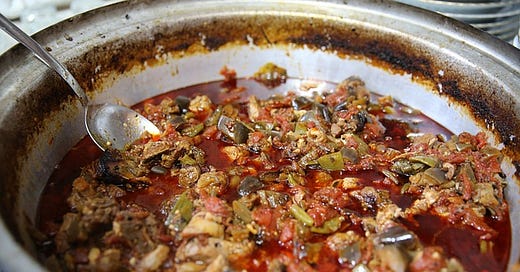When it comes to exploring the colorful palate of human culture, one cannot overlook the significance of food. Food unites us. Cuisine acts as a portal to different societies, reflecting their histories, traditions, and values. While every culture boasts its own unique dishes, there is one culinary marvel that seems to transcend borders and appears in various forms around the globe: it’s the humble stew! This beloved dish, found in countless cultures, exemplifies the universality of shared culinary practices and the tasty beauty of diversity.
A stew, at its core, is a savory concoction simply made by simmering ingredients in a liquid over a gentle heat. The beauty of this dish lies in its versatility, as it allows cultures to adapt and showcase their own distinct flavors and ingredients. Whether it's the comforting Irish stew, the vibrant Moroccan tagine, or the sour and spicy flavors of the Philippine sinigang, each variation tells a story of regional tastes and culinary heritage.
In Ireland, the stew represents a hearty and nourishing meal that embodies the country's agricultural roots. Made with lamb or beef, potatoes, onions, and carrots, Irish stew is a celebration of simplicity and wholesome flavors. Passed down through generations, this dish warms the heart and connects people to their ancestors.

In North Africa, the tagine takes center stage. Named after the earthenware pot in which it is cooked, this Moroccan stew bursts with aromatic spices, tender meats, and an array of vegetables. The slow cooking process allows the ingredients to meld together, creating a harmonious blend of flavors that engages the senses. The tagine embodies the vibrant spirit of Moroccan hospitality and the tradition of dining as a community
.
Meanwhile, in The Philippines the fiery sinigang showcases the country's love for big flavors and bold spices. This sour and spicy stew combines pork, beef, and seafood cooked with tamarind and other souring agents. The result is a spicy and tangy explosion that represents the character and resilience of the Filipino people.
These examples don’t even come close to scratching the surface of the unique stews from around the globe. From the aromatic curries of India and Pakistan to the savory gumbo of the bayou, every culture puts its unique spin on this culinary experience. Despite the differences in ingredients and techniques, stews share a common purpose: uniting people together in peace.

Stews are often prepared in large quantities, making them ideal for communal gatherings, celebrations, and holidays. They represent a coming together of family and friends, sharing not only a meal but also stories, laughter, and cherished memories. The act of preparing and enjoying a stew creates a sense of togetherness and builds a deeper understanding of cultural heritage and the commonality of being human.
Beyond the communal aspect, stews also reflect the resourcefulness and adaptability of cultures around the world. Historically, stews emerged as a way to stretch ingredients, utilizing whatever was available to create a nourishing meal. Whether it was a farmer making use of surplus crops or a fisherman concocting a stew from the day's catch, these dishes embody the ingenuity and creativity of the universal culinary spirit..
In a world that is often divided, the ubiquity of stews serves as a reminder of our shared experience. No matter where we come from, what language we speak, or what color our skin, the joy of a well-prepared stew transcends cultural barriers. It speaks to our fundamental need for sustenance, comfort, and connection with others.
So, next time you savor a spoonful of your favorite stew, take a moment to appreciate the cultural tapestry woven into the unique flavors. Embrace the diversity and heritage that each variation represents. Every culture has a stew, and with it comes a story waiting to be shared. Are you ready to tell yours?




